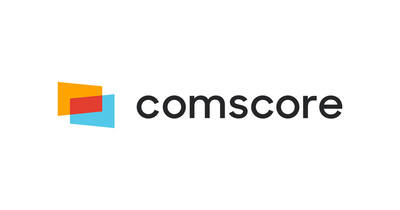Comscore Research Demonstrates Need to Move Beyond Panel-Dependent Methods in TV and Video Measurement
Comscore (NASDAQ: SCOR) has released research highlighting significant flaws in traditional panel-reliant media measurement, particularly in the context of the $70 billion video advertising industry. Chief Research Officer Michael Vinson emphasizes that the declining participation rates, currently at 20-30%, undermine the reliability of panel data. Factors such as COVID-19 have exacerbated these issues, complicating data collection from the population. Comscore advocates for a shift towards more robust and precise measurement methods that better capture viewer behavior and provide advertisers with accurate ROI insights.
- Comscore is positioning itself as a leader in addressing measurement reliability in the video advertising space.
- The new methodology proposed by Comscore provides more granular data, enhancing advertisers' ability to make informed decisions.
- Traditional panel-dependent methodologies are criticized for their declining participant rates, reducing the accuracy of media measurement.
- COVID-19 has worsened data collection challenges, making existing methodologies less applicable.
RESTON, Va., April 27, 2021 /PRNewswire/ -- With more than
In a new blog post titled "Relative Errors in Television Audience Measurement: The Future is Now", Comscore Chief Research Officer Michael Vinson examines the limitations of panel-dependent methodologies and outlines why advertisers who utilize panel derived estimates for planning, programming, or content acquisition strategies need more precise and granular information to properly capture the ROI of their ad spend.
Research highlights: fundamental flaws of a panel-dependent approach
- Vinson's analysis demonstrates how small samples today are extremely unstable and not able to properly support the decisioning of media spend that is in the market. An alternative is needed to ensure advertisers get the results they deserve.
- Common estimates place panel participation rates in the US around the 20 to
30% range and declining. Put differently, around70% to80% or more of the population contacted refuse to be a part of a panel. It becomes harder and harder to believe that the resulting panel is a probability sample of the population. - The dynamics of panel refusal have almost certainly changed during the COVID-19 pandemic, particularly when empanelment requires in-home interviews or installation. Thus, even if there may have been some attempt to understand the effect of nonparticipation bias before 2020, in the pandemic and post-pandemic worlds those conclusions, particularly for methods that include in-home visits, are now largely inapplicable.
- Today, with hundreds of networks and stations available, not to mention time-shifting, streaming platforms and video on demand, the size of a panel required to plausibly measure most content has become impractical.
"Comscore is firing the starter pistol on a long-overdue conversation about the need to move beyond panel-based point estimates in media measurement. The relative reliability of measurements and methodologies needs to be a primary consideration when evaluating measurement," said Michael Vinson, Chief Research Officer, Comscore.
"For a variety of social reasons, the collection of data from human populations using probability samples has become problematic," said Dr. Charles D. Palit, professor emeritus at the University of Wisconsin and a widely recognized expert in statistical sampling. "Because of this, many statisticians now look for new and better data gathering processes. Comscore's data system is one such example. The sheer mass of the data driving Comscore's solutions allows detailed estimates for complex viewing behavior that would be fiscally prohibitive if attempted on a probability sample. Comscore's approach to measuring television viewing behavior produces data which is more robust and valid than the data produced by current probability sampling methodology, and better suited for measuring television in the United States than a probability sample."
"We know that media will never be the same, so neither should its currency. With billions of dollars at stake across the industry and with viewing habits changing rapidly, advertisers should no longer rely on outdated approaches to audience measurement. This is why Comscore has built a currency designed for today's environment, using passive collection techniques and measuring 1 in every 3 homes in the U.S. to provide more granular and stable viewership for brands and agencies to make more reliable buying decisions," said Bill Livek, CEO, Comscore.
To learn more about how Comscore's National and Local television solutions and our granular advanced audiences can drive better business outcomes, contact us today.
About Comscore
Comscore (NASDAQ: SCOR) is a trusted partner for planning, transacting and evaluating media across platforms. With a data footprint that combines digital, linear TV, over-the-top and theatrical viewership intelligence with advanced audience insights, Comscore allows media buyers and sellers to quantify their multiscreen behavior and make business decisions with confidence. A proven leader in measuring digital and TV audiences and advertising at scale, Comscore is the industry's emerging, third-party source for reliable and comprehensive cross-platform measurement. To learn more about Comscore, visit www.comscore.com.
![]() View original content to download multimedia:http://www.prnewswire.com/news-releases/comscore-research-demonstrates-need-to-move-beyond-panel-dependent-methods-in-tv-and-video-measurement-301278093.html
View original content to download multimedia:http://www.prnewswire.com/news-releases/comscore-research-demonstrates-need-to-move-beyond-panel-dependent-methods-in-tv-and-video-measurement-301278093.html
SOURCE Comscore
FAQ
What is the recent research published by Comscore regarding media measurement?
How does Comscore's research impact the video advertising industry?
What are the participation rates in media measurement panels according to Comscore?
What solution does Comscore propose for better audience measurement?








